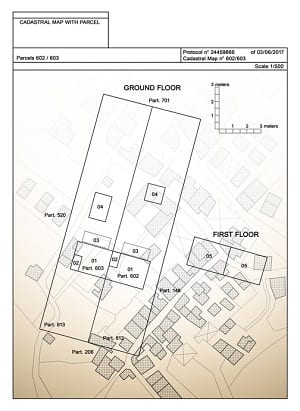Imagine putting together a 1,000-piece puzzle without knowing what it is a picture of. And what if there are no edges or corners to at least show you where the puzzle ends and begins?
Buying real property without a land survey is a similar exercise.
What Is A Land Survey?
A land survey is prepared by an land surveyor using calculations taken on the ground and compared with the registered title. It includes:
- the size of a parcel of land, showing the full measurements, corners and boundaries;
- The location of all buildings on the property;
- Any improvements such as fences, hedges and pools, relative to the property boundaries;
- Any easements (rights of way) or places where your neighbours, community members or utility companies may have the right to make use of your land, such as a common shortcut through the edge of your property;
- Any encroachments on your property, such as a neighbour’s garage or fence.
A survey also shows whether the deed (one’s legal ownership/title to the property) describes the property correctly. This is crucial to determine whether the physical features (dimensions and area) of the property match what is actually owned.

* Not an actual survey
A lack of a current survey may cause trouble in the future. For example, you may decide to put in a pool and discover too late that part of it falls on your neighbour’s lot, or you may have to remove an existing structure erected by a previous owner, but which is located on a neighbour’s lot.
Is Title Insurance Enough?
Some people may believe that not having a survey is acceptable because a title insurance policy can be purchased instead. However, a title insurance policy does not replace a survey, as it only protects you by ensuring you own what is described on your deed. It does not always give you back what you thought you were purchasing.
For example, without a survey, an immediate concern is whether you have paid for a 2,000 square foot lot or a 3,000 square foot lot. Just viewing where the fences are located is not enough, as one cannot guarantee that the fence is or is not on an invisible lot line.
A new current survey is best, but an existing survey may be sufficient depending on the property. If there is none available, you should insist on it before closing, and you should also always discuss the survey with your lawyer.


